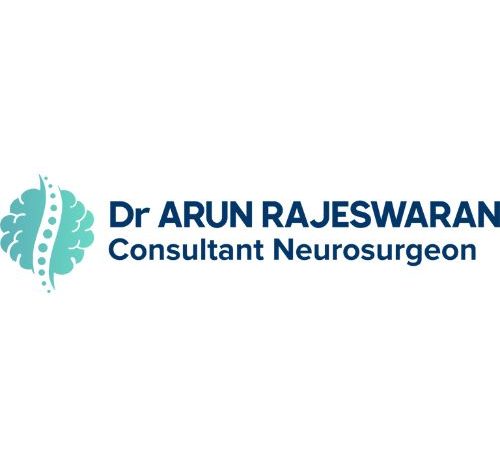Sciatica is a condition that affects millions of individuals worldwide, often resulting in debilitating pain and limited mobility. As a leading neurosurgeon and spine specialist in the UAE, Dr. Arun Rajeswaran emphasizes the importance of understanding the underlying causes of sciatica, recognizing its symptoms early, and seeking timely treatment. This comprehensive guide aims to educate
Sciatica is a condition that affects millions of individuals worldwide, often resulting in debilitating pain and limited mobility. As a leading neurosurgeon and spine specialist in the UAE, Dr. Arun Rajeswaran emphasizes the importance of understanding the underlying causes of sciatica, recognizing its symptoms early, and seeking timely treatment. This comprehensive guide aims to educate patients on sciatica’s causes, symptoms, treatment options, and preventive measures. A brain stroke isn’t just a medical emergency —rather, it can turn the person’s whole life upside down. But the good news? Up to 80% of strokes can be prevented with expert consultation with a neurosurgeon. Making some lifestyle and dietary changes can effectively affect our health, and that’s why applying good routines can help you more in safeguarding your future.
What Is Sciatica?
Sciatica refers to pain that radiates along the sciatic nerve, which branches from your lower back through the hips and buttocks and down each leg. Typically, sciatica affects only one side of the body. Sciatica, often misunderstood, usually occurs when irritation, inflammation, or compression affects nerves running from the lower back into the legs. While not typically serious, it can cause discomfort and affect daily life. In this blog, we delve into the causes, symptoms, treatment options, and preventive strategies for sciatica. From self-care tips to potential surgical interventions, we aim to provide valuable insights to help you manage this condition effectively.
Causes of Sciatica
Sciatica is not a diagnosis but a symptom of an underlying condition. The most common causes include:
- Herniated or Slipped Disc: A disc in the spine may bulge or rupture, pressing on the sciatic nerve.
- Spinal Stenosis: Narrowing of the spinal canal can compress the nerve roots.
- Degenerative Disc Disease: Aging and wear can lead to disc deterioration.
- Spondylolisthesis: One vertebra slips over another, pinching the nerve.
- Muscle Spasms or Injuries: Particularly in the piriformis muscle.
- Trauma or Tumors: Rare but possible causes that require prompt medical evaluation.
Common Symptoms
Sciatica symptoms can vary in intensity but typically include:
- Sharp or burning pain in the lower back, buttock, or leg
- Numbness or tingling along the sciatic nerve pathway
- Muscle weakness in the leg or foot
- Pain that worsens with sitting, sneezing, or coughing
- Difficulty moving or walking due to pain
Diagnosis
Dr. Arun Rajeswaran conducts a thorough examination that includes:
- Physical Examination: Tests for muscle strength, reflexes, and pain.
- Imaging: MRI, CT scan, or X-rays to identify structural problems in the spine.
- Nerve Tests: Electromyography (EMG) may be used to assess nerve function.
Various tests are utilized to confirm the diagnosis and rule out similar conditions, such as:
- Spine X-rays or CT Scans: Imaging techniques to visualize the spine and identify any structural abnormalities.
- MRI Scans: Detailed images to examine the spinal cord, nerve roots, and surrounding structures.
- Nerve Conduction Velocity Studies: Assess the speed of electrical impulses through nerves.
- Electromyography (EMG): Measures muscle response or electrical activity to detect nerve dysfunction.
Myelogram: A contrast dye is injected into the spinal canal followed by imaging to visualize the spinal cord and nerve roots.
Treatment Options
Treatment for sciatica depends on the underlying cause and the severity of symptoms.
Non-Surgical Treatments
- Medications: Anti-inflammatories, muscle relaxants, or nerve pain medications.
- Physical Therapy: Strengthening and stretching exercises to relieve pressure on the nerve.
- Lifestyle Modifications: Weight loss, posture correction, and ergonomic adjustments.
- Hot and Cold Therapy: To reduce inflammation and muscle tension.
- Injections: Corticosteroid injections can reduce nerve inflammation.
Surgical Treatments
Surgery may be considered if:
- Conservative treatments fail after 6–12 weeks
- The patient experiences severe weakness or bowel/bladder issues
Common procedures include:
- Discectomy: Removal of part of a herniated disc
- Laminectomy: Removal of part of the vertebra to relieve nerve pressure
- Spinal Fusion: In cases involving instability or severe degeneration
Prevention Strategies
While not all cases of sciatica are preventable, several strategies can reduce risk:
- Exercise Regularly: Focus on core strengthening and flexibility.
- Practice Good Posture: Especially during prolonged sitting.
- Lift Properly: Use your legs, not your back, when lifting heavy objects.
- Maintain Healthy Weight: Reduces strain on the spine.
- Quit Smoking: Smoking reduces blood flow to spinal discs and can accelerate degeneration.
When to See a Specialist
Consult a spine specialist like Dr. Arun Rajeswaran if you experience:
- Persistent pain lasting more than a week
- Sudden severe pain
- Numbness, tingling, or muscle weakness
- Difficulty controlling bladder or bowel functions
Conclusion
Sciatica is a manageable condition when diagnosed early and treated appropriately. With Dr. Arun Rajeswaran’s expertise in neurosurgery and spine care, patients in the UAE can expect comprehensive evaluation, personalized treatment plans, and advanced surgical care when necessary. Early intervention, combined with lifestyle adjustments and guided rehabilitation, can significantly improve quality of life and prevent long-term complications. Sciatica profoundly affects quality of life, but understanding, management, and prevention can mitigate its impact. Seeking medical attention promptly for persistent or severe symptoms is crucial to prevent complications and aid recovery. Embracing a holistic approach to spinal health reduces the risk of sciatica development and sustains overall well-being. For effective intervention in sciatica, consulting with top neurosurgeons in Dubai, like Dr. Arun Rajeswaran, can provide expert guidance.






















